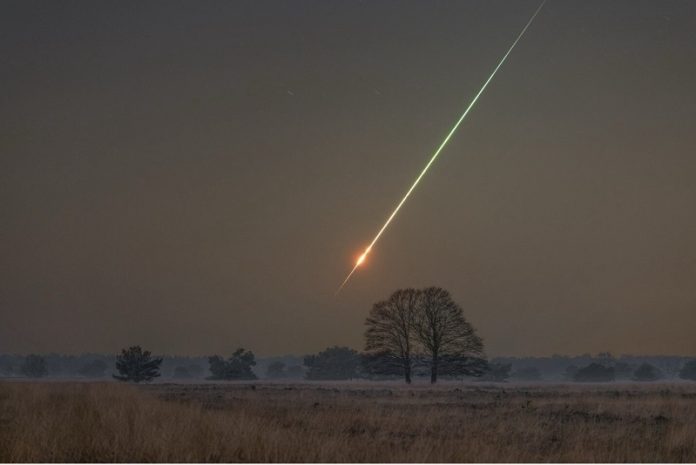
Most of us imagine asteroids as giant space rocks that can cause catastrophic damage if they hit Earth.
But a new study published in Nature Astronomy shows that even very small asteroids can surprise us—and sometimes explode suddenly as they enter our atmosphere.
In February 2023, a small asteroid called 2023 CX1 lit up the night sky over Normandy, France.
It had been spotted in space just seven hours before impact. Astronomer Peter Jenniskens of the SETI Institute and NASA Ames Research Center remembers quickly phoning his brother in the Netherlands, who then rushed outside to witness the fireball with his own eyes.
Across Europe, scientists and skywatchers captured dramatic photos and videos as the space rock streaked through the sky.
The asteroid itself was tiny by cosmic standards: nearly round, about 72 centimeters wide (a little under a yard), and weighing around 650 kilograms.
But its journey through the atmosphere told scientists something new about how these rocks behave.
When researchers compared data from different observatories, they noticed small errors in the asteroid’s calculated orbit, which were later corrected. Teams of volunteers joined professional astronomers to search for fragments.
Strong winds had scattered the pieces, making the hunt more difficult. Still, after hours of scanning, Jenniskens and his colleagues recovered two meteorites, one of which now resides in the Natural History Museum in Paris.
Analysis revealed that the meteorites were a common type of rock called “L-type ordinary chondrites.” These are among the most frequent meteorites to fall on Earth. But what stood out this time was not the type of rock—it was the way the asteroid broke apart.
Normally, small asteroids start breaking up high in the atmosphere, releasing energy gradually over several kilometers.
But 2023 CX1 held together until it reached about 28 kilometers above the ground. Then, in less than a second, it lost nearly all of its energy in a sudden blast. The explosion created a powerful spherical shock wave that spread over a much larger area than usual.
“Our team confirmed the existence of a new population of asteroids that can fragment abruptly in the atmosphere and release almost all their energy at once,” explained lead author Auriane Egal of the Montreal Planetarium.
This finding matters for planetary defense. While small asteroids rarely cause large-scale destruction, an abrupt explosion closer to the ground could create stronger shock waves over cities or towns. Understanding which types of asteroids behave this way is crucial for predicting risks and preparing defenses.
In short, even small space rocks can pack a dangerous punch—and scientists are now learning just how unpredictable they can be.
Source: SETI Institute.



